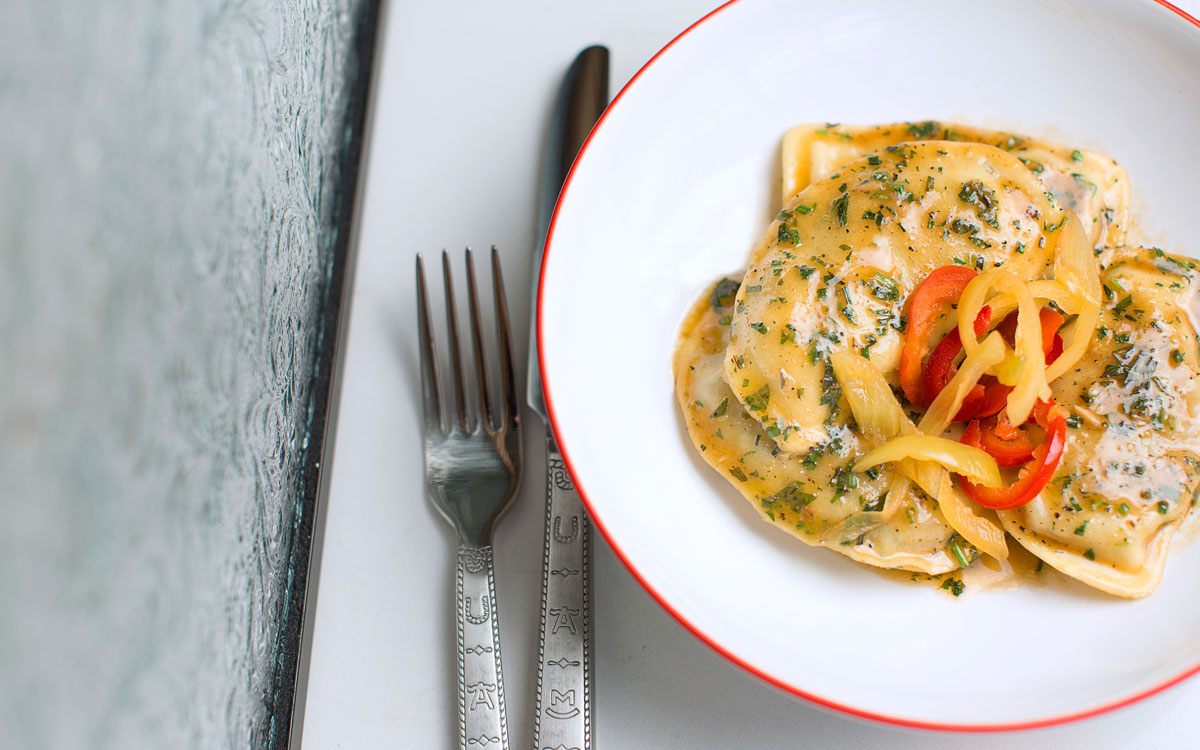

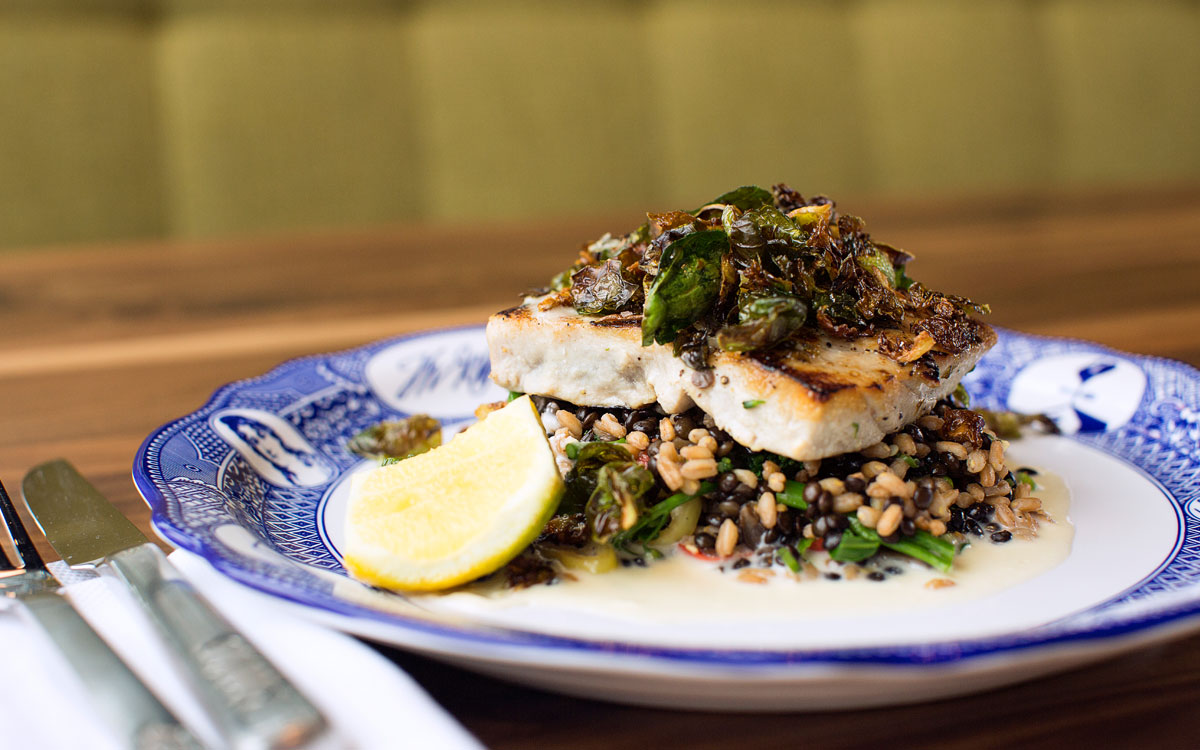



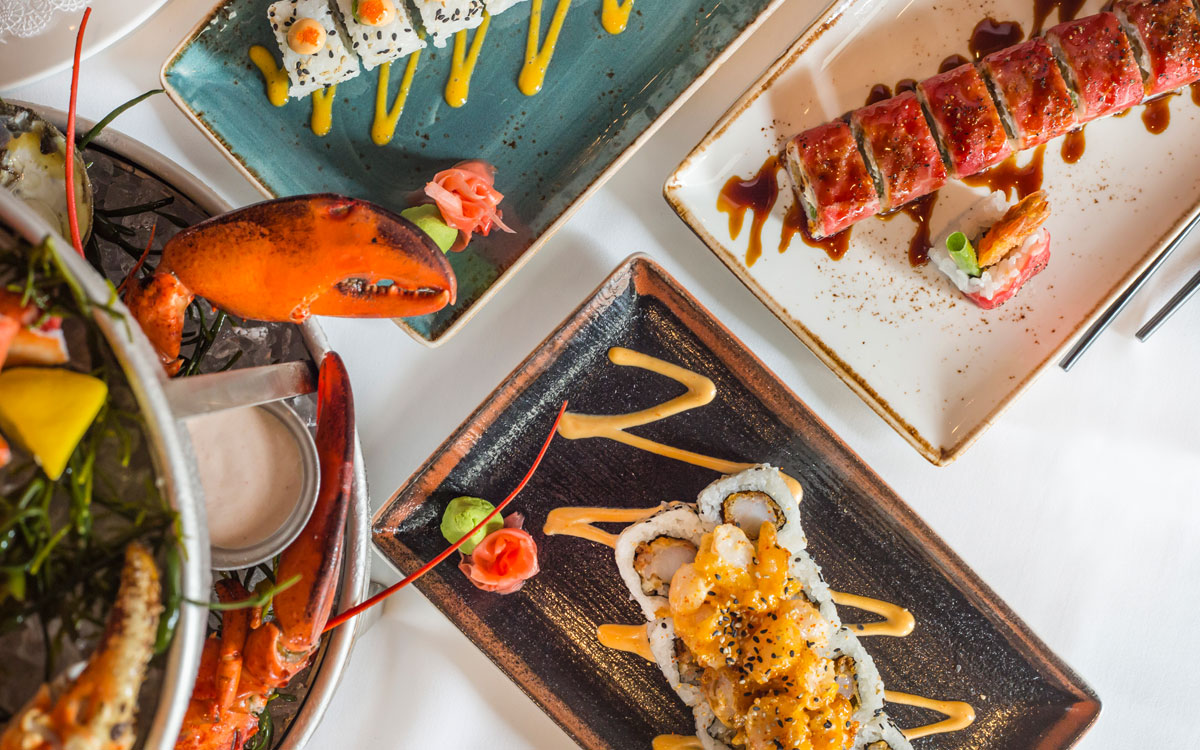
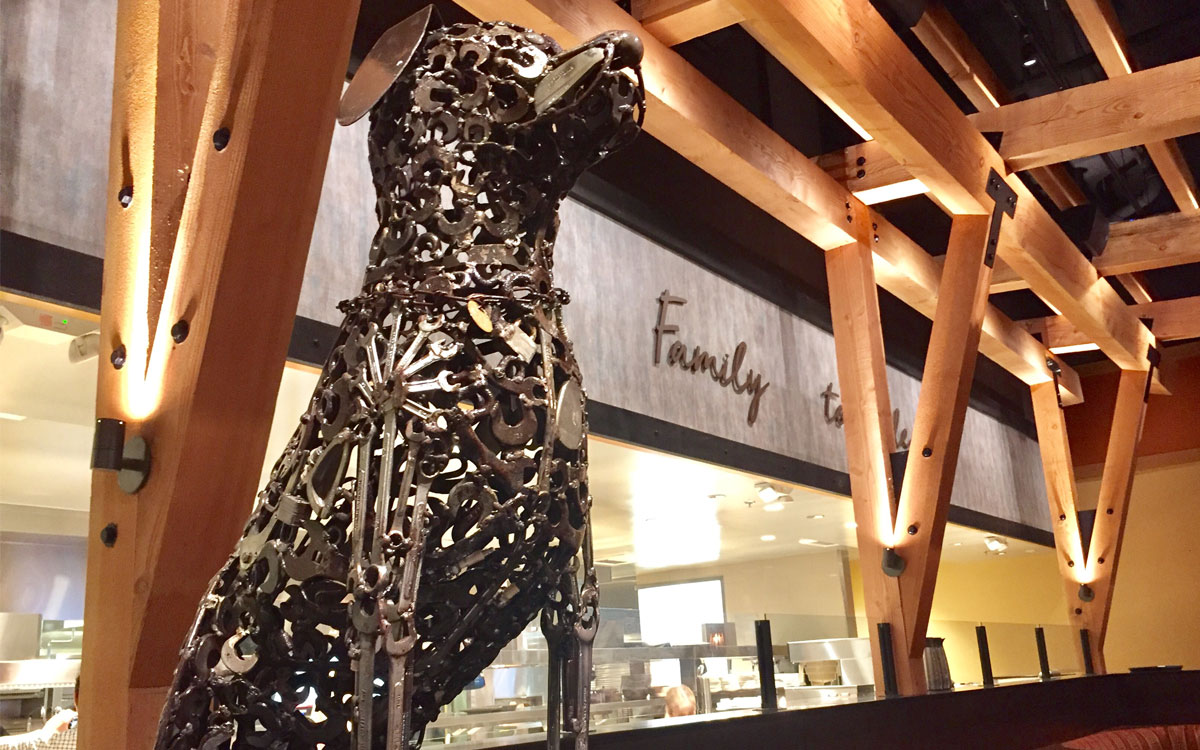
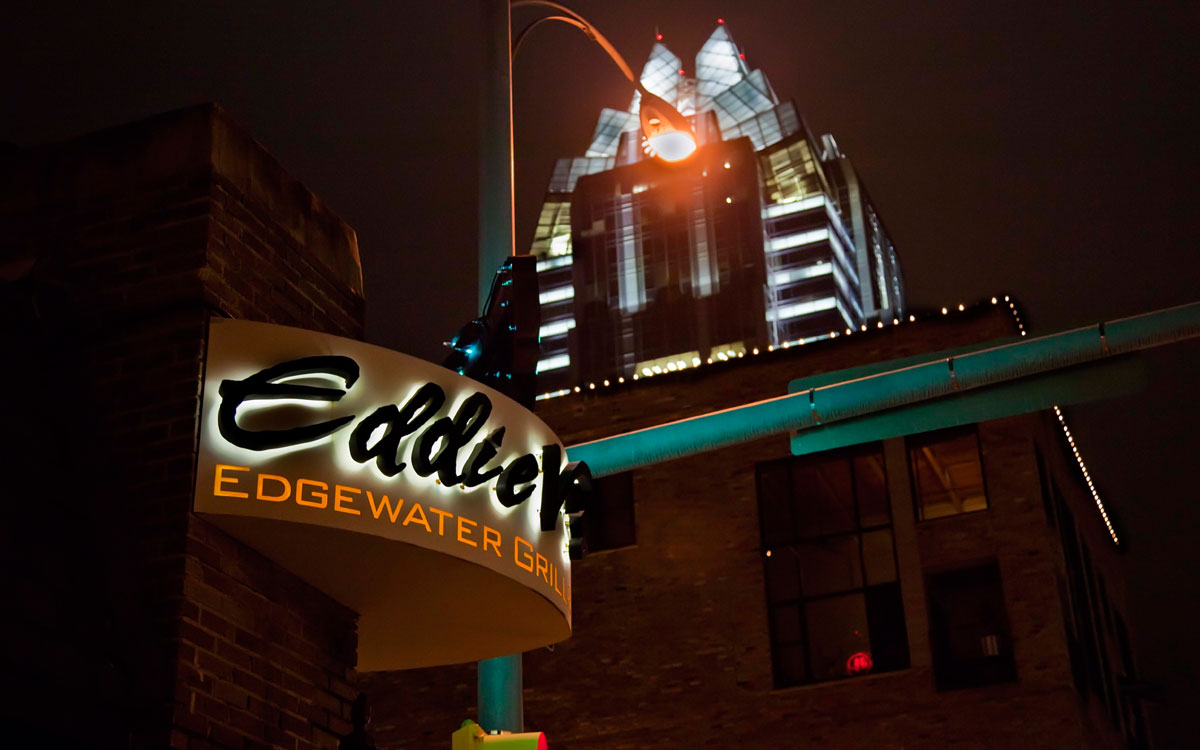
[DOWNLOAD] 2017 and 2018 FSR 50 reports in PDF format
One of the trends I’ve seen play out in full-service over the past year is something that feels rather similar to how fast casual fractured the quick-service status quo. If you look at McDonald’s, for example, what’s really driving the chain’s menu clean up? Its decision to pull artificial preservatives from burgers, not to mention fresh beef Quarter Pounders, feels like something that would befuddle a time traveller. Go back 10 years and it wasn’t feasible. Not just from a logistical and supply chain standpoint, but definitely from a character one. Mainly, McDonald’s had no real reason to think this way. But the consumer changed and started demanding this action. And much of that stems from the infusion of fast casuals into the conversation, brands like Five Guys and Smashburger that rerouted what we’ve come to expect from fast food. You see this effect on Taco Bell, and pretty much everybody else. Quick-serves simply had to close the gap. This was true with food quality, service, appearance, and more. And, perhaps not surprisingly, fast casual is now slowing down while fast food is picking up.
On the full-service side, one executive told me recently we were in the heart of a “casual dining 2.0” movement. It’s essentially the same phenomenon. Some of the country’s emerging and micro chains are influencing big players. You notice it across the lexicon. Here was one good example he gave: In their restaurants, chefs will purposely dish up a messy plate so it gives off a home-cooked appearance. This was in direct response to the perfect presentation seen so often at casual chains that feel like a reheated meal out of the microwave. And in some cases, it probably was. Brands across the country now, from Chili’s and its menu cutback to Applebee’s and fresh items like signature breadsticks, are tossing aside comfort levels. From service improvements to to-go upgrades and unique beverage programs, this is a necessary change if casual dining wants to keep pace. Like fast casual and quick service, casual dining is threatened by the same mediocre rut. Brand sentiment just isn’t powerful enough to keep guests who feel they can have a better product elsewhere, faster. Even the most powerful legacy chains need to keep evolving. What 2.0 chains are doing is influencing the top companies, just like McDonald’s and its upstart competitors. And the reverse is true, too. It’s a give and take that redefined limited service, and now it’s doing the same to casual dining.
Based on average-unit volume from this year’s FSR 50, here’s a look at eight emerging chains that are setting the bar for the industry, and paving the future of casual dining 2.0.
Average-unit volume: $14.1 million
Average check: $116
Total company sales (in millions): $177
Planned units for 2019: 2
One of the reasons Del Frisco’s sold Sullivan’s Steakhouse in September to Romano’s Macaroni Grill for about $32 million in gross proceeds was to focus on its Double Eagle brand. The upscale concept is a key growth vehicle right now for the company, although that could shift with recent additions bartaco and Barcelona Wine Bar, especially bartaco. Of the three restaurants Del Frisco’s opened in the third quarter, two were Double Eagles (one in Boston and a smaller prototype model in Atlanta). The other was a North Hills, North Carolina, bartaco. The plan calls for 11–13 total openings for Del Frisco’s in 2018, including four Double Eagles and three Del Frisco’s Grilles. The concept, always lauded for its wine program, which features more than 40 by the glass, is facing some challenges. Same-store sales decreased 1.2 percent in the second quarter, consisting of a 6.3 percent decline in customer counts, partially offset by a 5.1 boost in average check. The company said, however, that trends turned positive in June and were climbing ever since a negative first quarter.
There’s also new leadership. With the Sullivan’s sale, Scott Smith, who had served as the steakhouse’s president since January 2017, shifted to the same responsibilities at Double Eagle. “The sale of Sullivan’s Steakhouse enhances our financial condition while enabling us to sharpen our focus on opportunities with the highest potential for strong returns. These include executing our emerging brands integration and expanding our core concepts of Del Frisco’s Double Eagle Steakhouse, Barcelona Wine Bar and bartaco,” Norman Abdallah, Del Frisco’s CEO, said at the time.
Average-unit volume: $12.5 million
Average check: $57
Total company sales (in millions): $60
Planned units for 2019: 1
All total, the unique brand has nine locations. One is a Farmers & Distillers, one a Founding Spirits, a Farmers Fishers Bakers, and a First Bake Café & Creamery. The six other D.C.-area spots are straight-up Founding Farmers. What makes this concept really different is the fact its majority owned by the North Dakota Farmers Union, a group of more than 47,000 farmers. Right out of the gate, it has culinary and ingredient credibility that’s hard to beat.
“The most important thing about being farmer owned is that the vast majority of the investment capital comes from farmers. All investment capital comes with strings attached,” co-owned Dan Simons told FSR in June. “So the question is what are those strings. If your investors are investment bankers on Wall Street you need to maximize the return on their investment. For us, we are promising our farmer owners that maximizing return on investment is not our primary goal, but we instead promise to remain true by buying from American family farmers and to put mission before profit.” Staying true to the farmers trickles down to every aspect of the restaurants, from the American-made furniture to using local artists.
Founding Farmers has struck a serious chord with millennials. It’s a fresh-faced concept inside and even has a therapist, guidance counselor, and in-house masseuses on staff for employees, according to the Washingtonian. The relationship with the farmers also allows the concept to keep prices low and control the supply chain. While not all of the 47,000-plus farmers supply the restaurants with product, many do. The farmers union is also a resource for the restaurant group. When it opened in King of Prussia, Pennsylvania, for instance, it worked through the union to tap into Pennsylvania suppliers and now all meat comes from that state.
“I love the credibility and honesty of what we do,” Simons said.
Average-unit volume: $11 million
Average check: $115
Total company sales (in millions): $165
Planned units for 2019: 3–5
STK has lit up sales in recent quarters. The high-end concept reported same-store sales gains of 7.5 percent at domestic stores, year-over-year, in Q2. Profitability boosted 360 basis points compared to the prior year. On a trailing 12-month basis, adjusted EBITDA is $8.2 million. STK opened a second licensed Dubai restaurant and a company-run store in San Diego this past quarter, with five on track for 2018. The brand had revenue of $20.3 million up from $19.9 million thanks to the comps growth as well. The company said it expects to hit total food and beverage sales between $170–$180 million this year, with comps growth of 3–4 percent for the entire fiscal calendar. To illustrate the run, STK’s domestic same-store sales lifted 7.3 percent in Q1. So it’s been quite a start. The company is also working with a refreshed leadership team that added a new position that focuses solely on special events. Celeste Fierro transitioned from a role as SVP of operations to the fresh VP of special events appointment. Connie Collins joined as VP of operations and global training, and Tyler Loy was hired as VP of strategy and measurement—also a new position. Collins was the COO of Bravo Brio Restaurant Group, while Loy hails from Einstein Noah Restaurant Group.’
STK has plenty of growth opportunities stateside and internationally. STK Restaurants are currently located in New York City, South Beach, Orlando, Chicago, Atlanta, Denver, Los Angeles, Las Vegas, San Diego, Toronto, London, Ibiza, Dubai, Mexico City, and Milan.
Average-unit volume: $8.5 million
Average check: $45
Total company sales (in millions): $60
Planned units for 2019: 3
Eatertainment is one of those segments that hits a sweet spot for a lot of customers. It’s experiential dining at its finest. But it also requires a massive footprint and can be a bit dicey in regards to food offerings. Just gander at what’s going on with Dave & Buster’s these days. The category pioneer is testing a fast casual and continually working on speeding up its menu. The issue really being, is the consumer showing up for the amusements, the food, or both? And if it’s both, how do you offer one without detracting from the other? Pinstripes is a concept that has been on the right path for some time. In August 2017 it revealed a national expansion chart on the heels of a 37,000-square-foot Bethesda, Maryland, opening. The company said at the time the unit was the first of five 2017/2018 planned openings for the Chicago-based brand, including first-time entries into Cleveland, Houston, Fort Worth, Texas, and San Mateo, California. To date, only Houston and San Mateo are still “coming soon.” The other locations hit the market, bringing the brand’s unit count to nine, with stores in Northbrook, South Barrington, Oak Brook, Chicago, Edina, Georgetown, North Bethesda, Overland Park, Fort Worth, and Cleveland.
Founded in 2017 by Dale Schwartz, Pinstripes is a country-club style venue that caters to the community-oriented guest. Bowling lanes, indoor/outdoor bocce courts, made-from-scratch Italian/American cuisine, a curated wine cellar, and craft beer define the concept. It’s also a dynamic special events venue with enough room for 20 to 600 guests. “People are disconnected with real humans in forming quality connections. With Pinstripes, we’re going back to the future by embracing human connections,” CEO Dale Schwartz told FSR. About 75–80 percent of Pinstripes’ revenue stems from food and beverage.
Average-unit volume: $8.3 million
Average check: $33
Total company sales (in millions): $242
Planned units for 2019: 5
Cooper’s Hawk swung a major C-suite move in August, hiring Michael Coyne as CFO, effective October 1. Coyne arrived with more than three decades of leadership experience, including a six-month stint as interim CEO at Potbelly Corp. last year before Alan Johnson assumed permanent duties. He served as CFO of the fast casual since 2005. Before Potbelly, Coyne worked as senior vice president, small business at CNA Financial Corporation, and as CFO of CNA’s property and casualty operations business. He also spent seven years with Sears Holdings Corporation, working his way to vice president and treasurer. He will be responsible for overseeing Cooper’s Hawk’s finance, accounting, financial planning and analysis, internal audit, tax, and treasury areas.
Cooper’s Hawk has carved out a very popular niche in the business. Founded in 1995, it has grown to become the 34th largest winery in the U.S., and hosts more than 300,000 members in its wine club. It’s a fusion of winery and modern casual unlike anything else out there, with a Napa-style tasting room and artisanal retail market.
Another unique aspect of the Countryside, Illinois-based company is that it has offered healthcare insurance to its 4,500 or so employees (those who work 30-plus hours a week) since day one. Around 30 percent take advantage of the offer, the company told FSR. It comes in the form of a PPO or a HMO plan and Cooper’s Hawk covers about 65 percent of the cost of healthcare insurance for its employees.
“We’re taking care of our employees and helping them take care of themselves,” said Kristen Zagozdon, vice president of human resources. “Taking care of community is part of our purpose and we believe we need to take care of our team members because they’re the ones who take care of our guests.”
Average-unit volume: $7.8 million
Average check: $110
Total company sales (in millions): $109
Planned units for 2019: 1
The 16-unit concept from Cameron Mitchell Restaurants continues to thrive. The upscale brand has expanded coast-to-coast with units in Beverly, Hills, California; Boston; Columbus, Ohio; Dallas; Denver; Detroit; Indianapolis; Naples; New York City; Orlando, Florida; Philadelphia; Phoenix; Tampa, Florida; and Washington, D.C. A second Denver store is on the books for fall as well. When Ocean Prime hit the Big Apple in 2015, it was a major deal for the company. A similar challenge and milestone likely awaits with a 2019 Chicago opening. The restaurant has proven it works in large, urban markets nationwide, relying on prime cuts and a Wine Spectator-honored list, as well as what the company refers to as “truly genuine hospitality.” Cameron Mitchell, which operates a total of 15 different concepts and celebrated its 25-year anniversary in October, curates each location to the city it opens in. The company’s experience as a multi-concept operator has given it the chops to understand individuality, and how to build a non-chain chain that customers flock to like an independent. Ocean Prime is also known for its lighter fare, like shellfish cobb salad and sushi, as well as a smoking shellfish tower.
Average-unit volume: $6.4 million
Average check: $20
Total company sales (in millions): $150
Planned units for 2019: None
Brief disclaimer. When I was talking about the concept in the intro inspiring 2.0, I was referring to Lazy Dog. There are 20 California locations (one in Fresno and Newark are coming soon), two in Colorado, two in Nevada, and four in Texas. A Vernon Hills, Illinois, restaurant is also upcoming, which would be a first for Lazy Dog. As mentioned earlier, this is a concept that takes its differentiators seriously—and does everything it can to share them. That includes the imperfect plates of food that feel down-home, and an eclectic menu that showcases everything from Togarashi Edamame Beans to Thai Peanut Wings. The concept was No. 7 on Fishbowl’s annual list of emerging chains this year. Locations, naturally, feature sizable dog-friendly patios complete with outdoor fire pits and lounge areas. Of the change in casual dining, Simms told FSR that, “What I saw at the time was that casual dining was becoming much more profit focused. And with that came changes to the menu, changes to the way food was prepared. Where a lot of stuff was being pre-prepared and microwaved to order. I just felt like casual dining was headed in that direction, but the guest was headed in the opposite direction.”
When Simms founded the brand with his dad, who is also his partner, it came down to forward thinking like this: “I looked at my dad … and I said, ‘You know, there is going to come a time where the millennial population is going to come into their casual dining years.’ And while at the same time, I feel like the Baby Boomers are going to become more interested in where their food is coming from and how it’s being prepared. So we created Lazy Dog on the premise that we really felt like there needed to be a next generation of casual dining.”
Average-unit volume: $6.4 million
Average check: $90
Total company sales (in millions): $102
Darden’s smallest concept, 19-unit Eddie V’s, has enjoyed stellar sales recently. The brand reported same-store sales gains of 3 percent, year-over-year, in the first quarter. When asked about the performance of fine dining, CEO Gene Lee said it was being driven by a combination of traffic and check growth.
“We always have trouble reading our upscale brands on check in traffic because the consumer, you know our traffic numbers are generated from entree counts and both businesses (including Capital Grille) do a lot of bar business and generate a lot of traffic that’s not always related back to an entree count,” he said.
“We’re excited about some opportunity in capital growth and increase some capacity in restaurants that are at full capacity right now and so we’re really excited about the performance of our upscale businesses, and they continue to do really well. We think they’re really well-positioned and we’re looking forward to being able to grow Eddie V’s a little bit quicker in the future as that base gets bigger.”
Perhaps the biggest takeaway from that is the last sentence. Darden did not add an Eddie V’s location this past year. It appears that could change. Hard to predict by how much but Darden wouldn’t consider it unless the figures made sense. The Olive Garden and LongHorn operator has a history of clustering its growth strategy. So it will be interesting to see how this plays out and to what extent moving forward.





